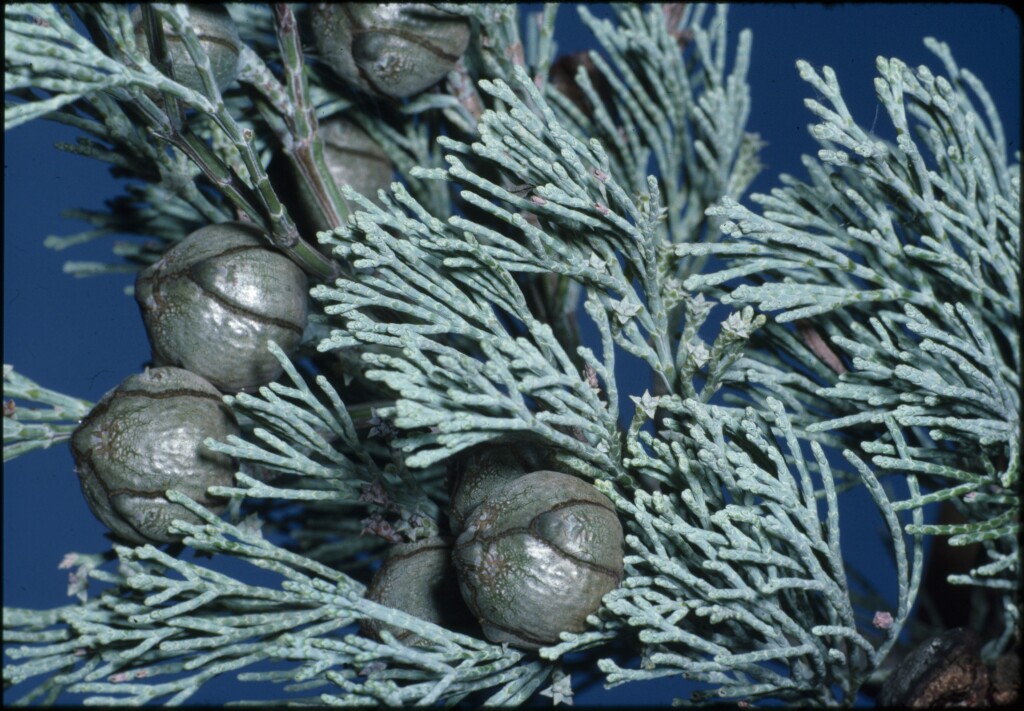Callitris glaucophylla
Joy Thomps. & L.A.S.Johnson White Cypress-pineBroad conical tree to 20 m high, or stunted tree to only 3 m in less favourable habitats. Leaves 1–3(–6) mm long, glaucous, occasionally dark green, outer side rounded. Female cones usually single, sometimes in groups of 2 or more, ovoid to subglobose, 1–3 cm diam. when open, rarely remaining on branches long after maturity; scales thin, separating almost to base as cone opens, dorsal surface finely to coarsely rugose, never tuberculate, often with very small dorsal point near apex; columella not lobed, slender or thick.
LoM, MuM, Wim, VVP, VRiv, MSB, RobP, MuF, GipP, Gold, CVU, GGr, NIS, EGU. Also NT, SA, Qld, NSW. Common in inland woodlands on loamy plains, sandy rises and outcrops of sedimentary and granitic rock near Murray River, on Mt Arapiles and in scattered pockets to the west of Melbourne (e.g. Bacchus Marsh, Maude, Batesford).
Specimens with a cone morphology intermediate between Callitris glaucophylla and C. gracilis are found in the Murray River area, and may be of hybrid origin (Adams 1985, p. 48; Thompson & Johnson 1986, p. 733).
Victorian populations have at times been treated as C. columellaris F.Muell., but morphological and molecular evidence indicates this to be a species of restricted occurrence in near-coastal northern New South Wales and southern Queensland.
The wood of this slow-growing conifer is renowned for its resistance to insect attack, particularly that of termites.
Entwisle, T.J. (1994). Conifers (Pinophyta). In: Walsh, N.G.; Entwisle, T.J., Flora of Victoria Vol. 2, Ferns and Allied Plants, Conifers and Monocotyledons, pp. 113–121. Inkata Press, Melbourne.
 Spinning
Spinning


